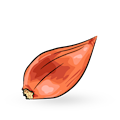Buntil is a savory Indonesian dish originating from Central Java, that features grated coconut meat mixed with anchovies or dried shrimp, chilies, shallots, and a medley of spices, all tightly wrapped in leaves (typically cassava, papaya, or taro) and then slowly simmered in a rich, spiced coconut milk broth until tender and deeply infused with flavor.
This dish is widely associated with home-style cooking in Javanese households, often appearing at communal feasts or during the fasting month of Ramadan, where it is served as part of the evening meal to break the fast. Buntil’s appeal lies in its layered textures and the way it transforms modest ingredients into a dish that feels both hearty and refined.
Nasi kucing is a unique and iconic Indonesian street food, a rice dish originating from Central Java, especially popular in cities like Yogyakarta, Solo, and Semarang. The name translates literally to "cat rice" (nasi = rice, kucing = cat), which refers not to the ingredients, but to the portion size — small enough to be a meal for a cat.
Nasi Kucing consists of a small scoop of rice served with simple toppings, usually wrapped in a banana leaf or brown paper. Common toppings include sambal, dried anchovies (teri), tempeh, shredded chicken, oseng-oseng (stir-fried vegetables), or sometimes a dollop of chili-fried tuna (abon or tongkol).
Nasi bogana is a complete rice meal from Indonesia, originating in Tegal, a coastal town in Central Java, and widely associated with Javanese culinary culture. The dish consists of steamed white rice served with a variety of side dishes, all neatly arranged and typically wrapped in banana leaves for both portability and presentation.
It is commonly sold in local eateries, food stalls, and during family or communal gatherings, and is known for combining multiple flavors and textures into a single package. The core of nasi bogana is plain rice, but what sets it apart is the assortment of side components that accompany it.
MAIN INGREDIENTS
Sate kere is a distinctive Indonesian satay dish that comes from Central Java, particularly the city of Surakarta. Unlike most satay preparations that feature cuts of beef, chicken, or goat, sate kere is prepared using slices of tempeh, tofu, and occasionally beef offal, such as intestines or tripe.
The name itself means “poor man’s satay,” referring to its origins as a more affordable version of skewered meat satay, created by vendors and home cooks to serve people who could not always afford pricier cuts of beef. The dish uses tempeh and tofu as the main ingredients because these plant-based proteins were readily available and inexpensive, making sate kere accessible to a wide range of people.
TasteAtlas food rankings are based on the ratings of the TasteAtlas audience, with a series of mechanisms that recognize real users and that ignore bot, nationalist or local patriotic ratings, and give additional value to the ratings of users that the system recognizes as knowledgeable. TasteAtlas Rankings should not be seen as the final global conclusion about food. Their purpose is to promote excellent local foods, instill pride in traditional dishes, and arouse curiosity about dishes you haven’t tried.












